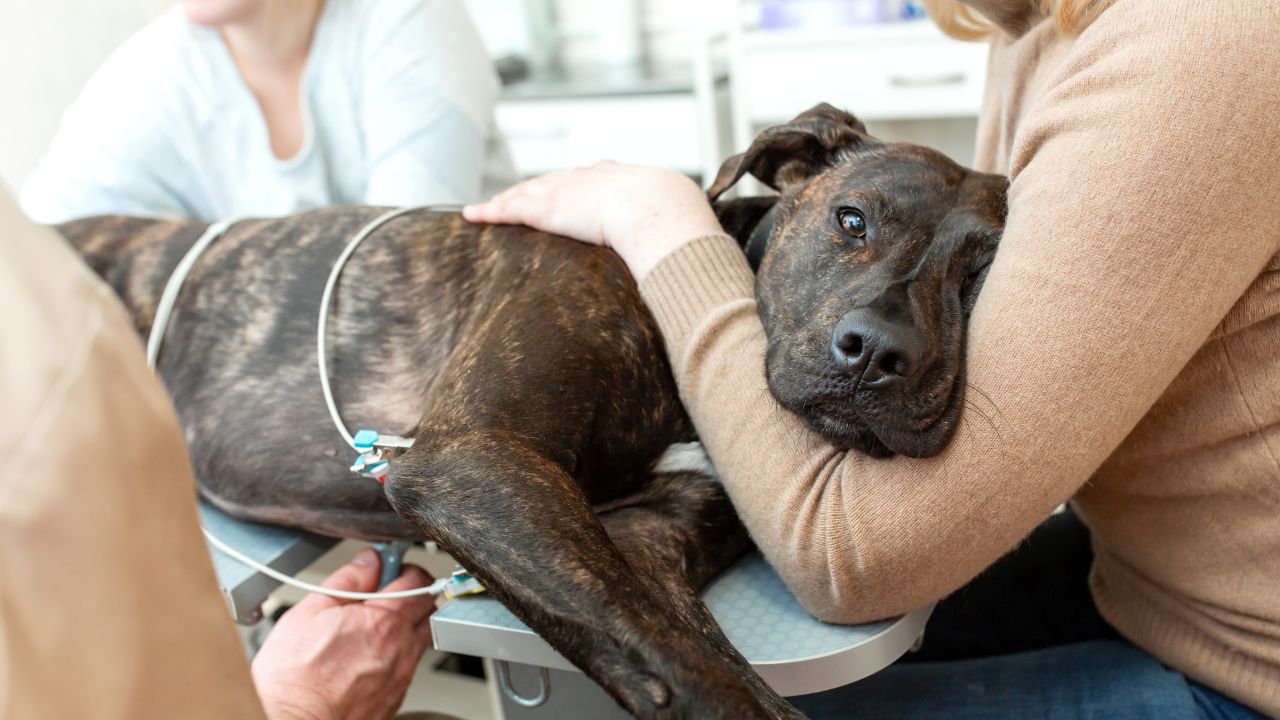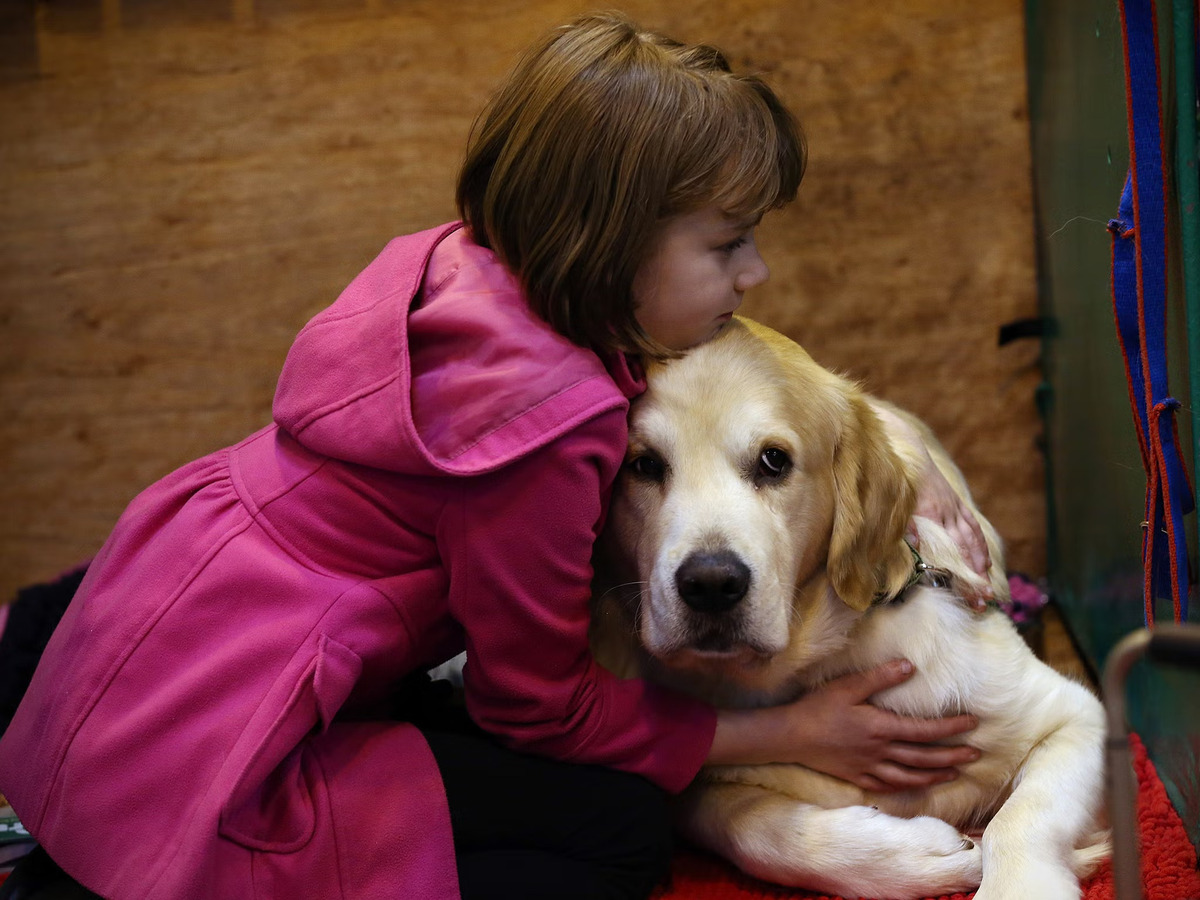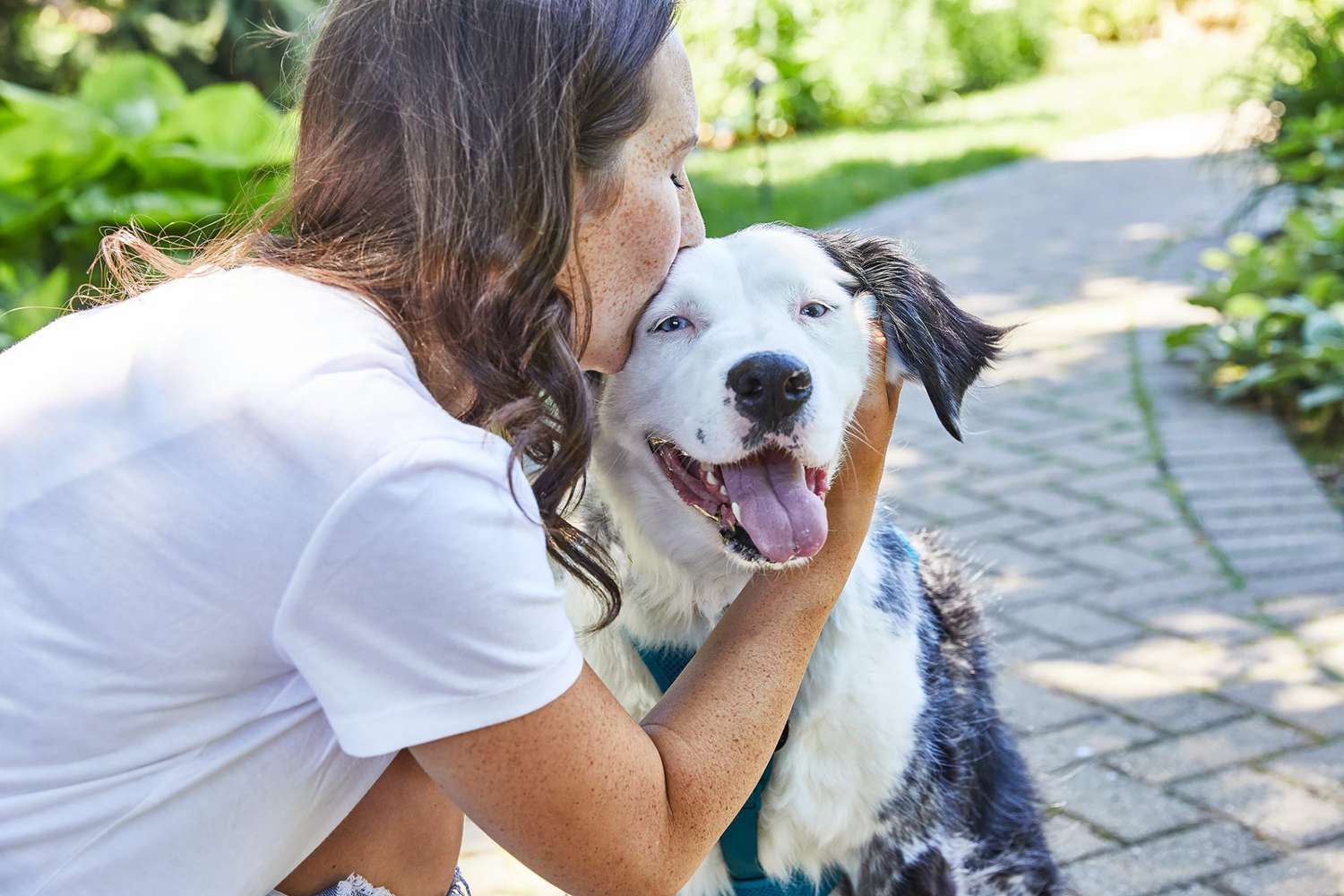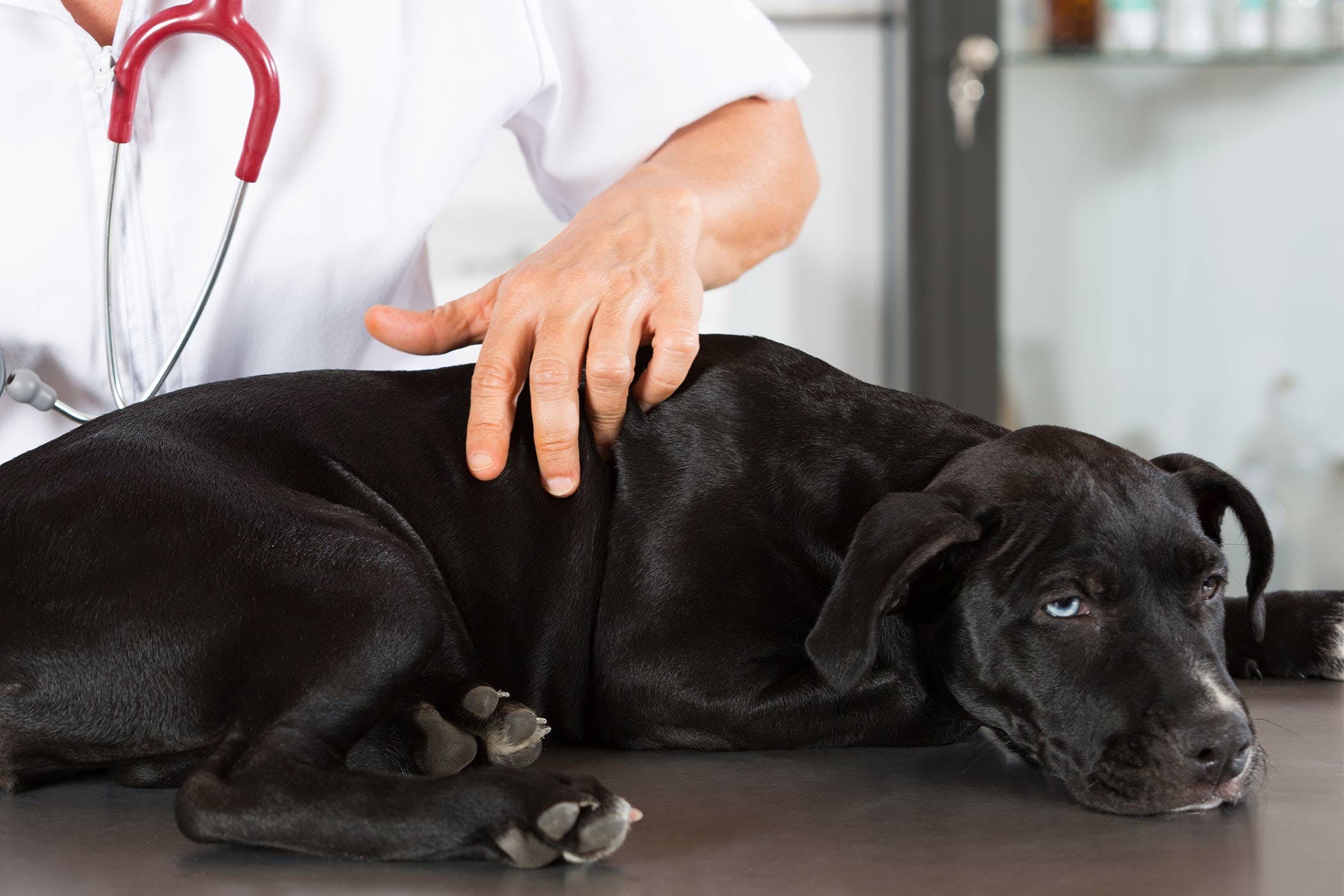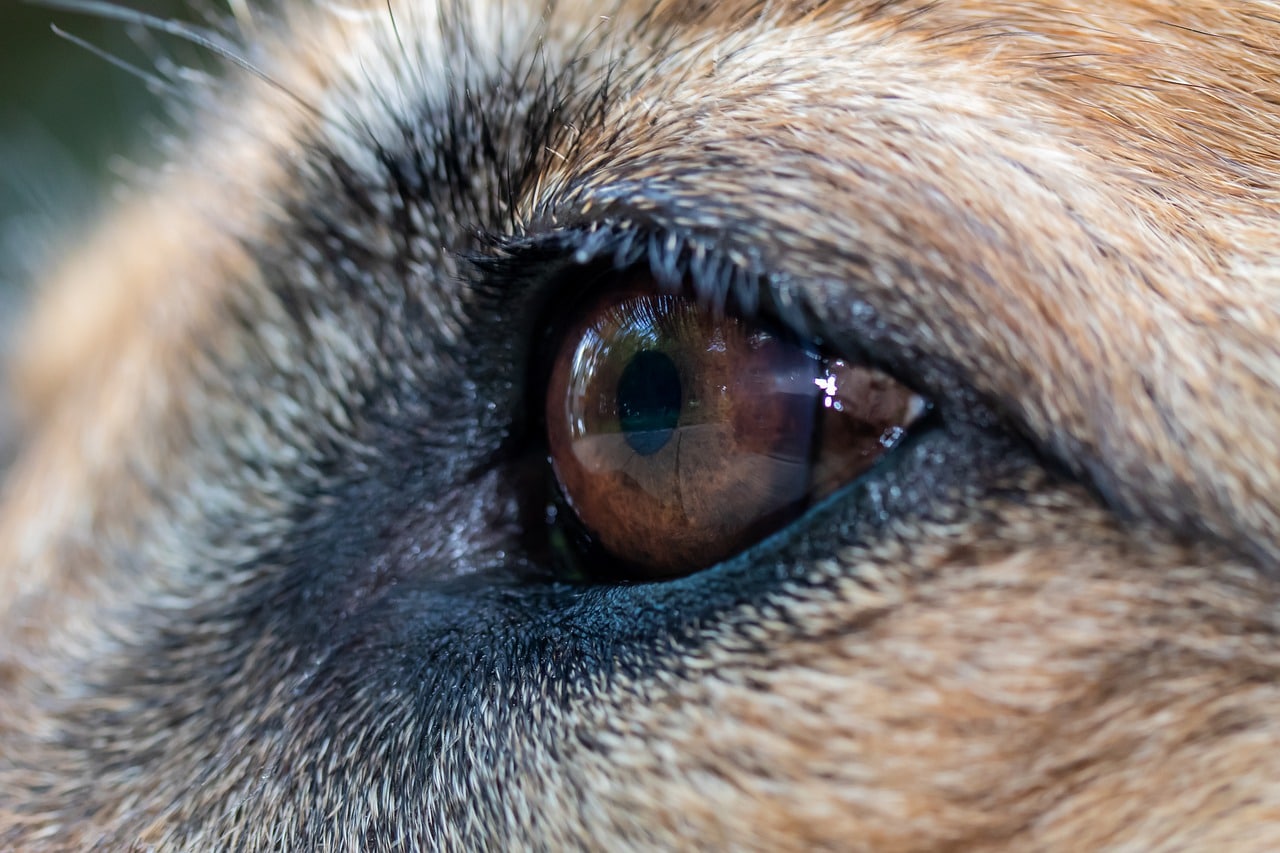Home>Health & Wellness>Common Health Issues>Why Do Most Dogs Die Of Cancer


Common Health Issues
Why Do Most Dogs Die Of Cancer
Published: February 4, 2024
Learn about common health issues in dogs, including why cancer is a leading cause of death. Understand the factors contributing to this prevalent problem and how to prevent it.
(Many of the links in this article redirect to a specific reviewed product. Your purchase of these products through affiliate links helps to generate commission for Pawsomeoldies.com, at no extra cost. Learn more)
Table of Contents
Introduction
Cancer is a devastating disease that affects not only humans but also our beloved canine companions. It is a leading cause of illness and mortality in dogs, and its prevalence has been a growing concern among pet owners and veterinarians alike. Understanding the factors contributing to cancer in dogs, the common types of cancer they may develop, and the signs and symptoms to watch for is crucial for early detection and effective treatment.
The bond between humans and dogs is profound, and the impact of cancer on our furry friends is deeply felt. As a result, there is a pressing need to shed light on this prevalent health issue and explore ways to mitigate its impact on our canine companions. By delving into the prevalence, contributing factors, types, symptoms, and treatment options for cancer in dogs, we can equip ourselves with the knowledge and tools necessary to provide the best possible care for our four-legged family members.
The prevalence of cancer in dogs
Cancer is a significant health concern for dogs, with its prevalence steadily increasing in recent years. Studies have shown that approximately 1 in 4 dogs will develop cancer at some point in their lifetime. This alarming statistic underscores the urgent need for a deeper understanding of the factors contributing to cancer in dogs and the implementation of effective preventive measures.
The rise in cancer cases among dogs can be attributed to various factors, including environmental influences, genetic predisposition, and lifestyle factors. Environmental factors such as exposure to carcinogens, pollutants, and secondhand smoke can significantly impact a dog's susceptibility to cancer. Additionally, genetic predisposition plays a crucial role, as certain breeds have a higher predisposition to specific types of cancer. For example, Golden Retrievers are more prone to developing lymphoma, while Boxers have a higher risk of mast cell tumors.
Furthermore, lifestyle factors, including diet, exercise, and overall wellness, can influence a dog's likelihood of developing cancer. Poor diet, lack of exercise, and obesity have been linked to an increased risk of cancer in dogs. As a result, the prevalence of cancer in dogs serves as a poignant reminder of the importance of holistic care and proactive health management for our furry companions.
The impact of cancer on dogs extends beyond the physical toll, affecting their quality of life and the emotional well-being of their human families. Witnessing a beloved pet battle cancer can be emotionally challenging, underscoring the need for heightened awareness and proactive measures to address this prevalent health issue.
By acknowledging the prevalence of cancer in dogs and delving into the contributing factors, we can take proactive steps to mitigate its impact. Through education, early detection, and access to advanced treatment options, we can strive to improve the well-being of our canine companions and provide them with the best possible care.
Understanding the prevalence of cancer in dogs is a crucial step toward fostering a deeper appreciation for the health challenges they face and the importance of proactive healthcare measures in safeguarding their well-being.
Factors contributing to cancer in dogs
The factors contributing to cancer in dogs are multifaceted, encompassing a range of influences that can significantly impact a dog's susceptibility to this devastating disease. Environmental factors, genetic predisposition, and lifestyle elements all play pivotal roles in the development of cancer in dogs.
Environmental influences, including exposure to carcinogens, pollutants, and secondhand smoke, can have a profound impact on a dog's likelihood of developing cancer. Carcinogens present in the environment, such as pesticides, herbicides, and industrial pollutants, can pose a significant risk to dogs. Additionally, exposure to secondhand smoke has been linked to an increased risk of certain types of cancer in dogs, highlighting the importance of minimizing their exposure to harmful environmental factors.
Genetic predisposition also plays a crucial role in a dog's susceptibility to cancer. Certain breeds have a higher predisposition to specific types of cancer, emphasizing the genetic component of this disease. For instance, Bernese Mountain Dogs are more prone to developing histiocytic sarcoma, while Scottish Terriers have an increased risk of bladder cancer. Understanding the genetic predispositions of different breeds can aid in early detection and proactive management of cancer in dogs.
Lifestyle factors, including diet, exercise, and overall wellness, are integral to a dog's susceptibility to cancer. A balanced and nutritious diet, regular exercise, and proactive wellness management can contribute to a dog's overall health and reduce the risk of developing cancer. Conversely, poor diet, lack of exercise, and obesity have been linked to an increased risk of cancer in dogs, underscoring the importance of holistic care and proactive health management.
By recognizing and addressing these contributing factors, pet owners and veterinarians can work collaboratively to minimize the impact of environmental influences, identify genetic predispositions, and promote healthy lifestyles for dogs. Through proactive measures such as minimizing exposure to environmental carcinogens, understanding breed-specific genetic predispositions, and prioritizing a balanced lifestyle, we can strive to reduce the incidence of cancer in dogs and enhance their overall well-being.
Understanding the multifaceted factors contributing to cancer in dogs empowers pet owners and veterinary professionals to take proactive steps in mitigating the impact of this disease. By addressing environmental influences, genetic predispositions, and lifestyle elements, we can work toward a future where cancer in dogs is less prevalent, and our beloved companions can lead healthier, happier lives.
Common types of cancer in dogs
Cancer can manifest in various forms in dogs, affecting different organs and bodily systems. Understanding the common types of cancer in dogs is essential for early detection and effective management. Some of the prevalent types of cancer in dogs include:
-
Lymphoma: This type of cancer affects the lymphatic system and is one of the most common cancers in dogs. Lymphoma can manifest in various forms, including multicentric (affecting multiple lymph nodes), alimentary (involving the gastrointestinal tract), and mediastinal (affecting the chest cavity). Symptoms may include swollen lymph nodes, lethargy, decreased appetite, and weight loss.
-
Mast Cell Tumors: Mast cell tumors are a common form of skin cancer in dogs. These tumors can vary in size and appearance, making them challenging to detect without a thorough examination. Symptoms may include skin lumps or masses, itching, redness, and ulceration at the tumor site.
-
Hemangiosarcoma: This aggressive cancer originates in the blood vessels and commonly affects the spleen, liver, and heart. Hemangiosarcoma is often challenging to detect in its early stages, and symptoms may include weakness, pale gums, abdominal distension, and collapse.
-
Osteosarcoma: Osteosarcoma is a bone cancer that primarily affects large and giant dog breeds. It commonly occurs in the long bones of the limbs and can cause lameness, swelling, and pain at the affected site. Osteosarcoma is known for its rapid progression and propensity to metastasize to other organs.
-
Melanoma: Melanoma is a type of skin cancer that can also affect the mouth and eyes of dogs. Oral melanoma is particularly aggressive and can cause symptoms such as oral masses, difficulty eating, and facial swelling. Early detection and intervention are crucial for managing this type of cancer.
-
Mammary Gland Tumors: Unspayed female dogs are susceptible to mammary gland tumors, which can be benign or malignant. Regular mammary gland examinations and spaying at an early age can significantly reduce the risk of these tumors.
Understanding the common types of cancer in dogs empowers pet owners to remain vigilant for potential symptoms and seek prompt veterinary care. Early detection and intervention are pivotal in improving treatment outcomes and enhancing the quality of life for dogs diagnosed with cancer. By familiarizing themselves with the prevalent types of cancer in dogs, pet owners can play an active role in safeguarding the health and well-being of their canine companions.
Signs and symptoms of cancer in dogs
Recognizing the signs and symptoms of cancer in dogs is crucial for early detection and timely intervention. While the specific manifestations of cancer can vary depending on the type and location of the disease, there are several common signs that pet owners should be mindful of:
-
Unexplained Weight Loss: Sudden or unexplained weight loss in dogs can be indicative of an underlying health issue, including cancer. Significant changes in body weight without alterations in diet or exercise warrant veterinary evaluation.
-
Lumps and Swellings: Palpable lumps or swellings on the body, particularly beneath the skin or within the mammary glands, should be promptly examined by a veterinarian. These may be indicative of tumors or abnormal growths that require further assessment.
-
Persistent Lethargy: Dogs experiencing prolonged periods of lethargy, fatigue, or a noticeable decrease in activity levels may be exhibiting early signs of illness, including cancer. Monitoring changes in energy levels is essential for identifying potential health concerns.
-
Changes in Appetite: A sudden loss of appetite or a significant increase in hunger without an apparent cause can be indicative of underlying health issues, including gastrointestinal or systemic disturbances associated with cancer.
-
Difficulty Breathing: Labored breathing, coughing, or wheezing in dogs can be symptomatic of respiratory or cardiac issues, which may include certain types of cancer such as lung tumors or metastatic disease.
-
Persistent Lameness or Pain: Dogs exhibiting persistent lameness, reluctance to move, or signs of discomfort, particularly in specific limbs or joints, may be experiencing pain associated with bone cancer or musculoskeletal tumors.
-
Abnormal Bleeding: Unexplained bleeding from the nose, mouth, or other bodily orifices, as well as the presence of blood in the urine or feces, should prompt immediate veterinary attention, as these symptoms can be indicative of various cancers.
-
Digestive Disturbances: Persistent vomiting, diarrhea, or changes in bowel habits that cannot be attributed to dietary indiscretion or minor gastrointestinal disturbances should be evaluated by a veterinarian to rule out underlying health issues, including gastrointestinal cancers.
-
Skin Abnormalities: Changes in the skin, such as ulceration, persistent itching, redness, or the development of abnormal masses or lesions, may be indicative of skin cancer or other dermatological conditions.
-
Behavioral Changes: Alterations in a dog's behavior, including increased aggression, anxiety, or disorientation, can sometimes be associated with neurological or systemic manifestations of cancer.
It is important to note that while these signs and symptoms can raise suspicion of cancer, they are not definitive indicators of the disease. Veterinary consultation and diagnostic testing are essential for accurately diagnosing and addressing potential health concerns in dogs. By remaining vigilant for these signs and promptly seeking veterinary care when abnormalities are observed, pet owners can play a pivotal role in safeguarding the well-being of their canine companions.
Treatment options for cancer in dogs
The treatment of cancer in dogs encompasses a multifaceted approach aimed at addressing the specific type of cancer, its stage of progression, and the overall health status of the affected animal. Veterinary oncology offers a range of treatment modalities designed to provide optimal care and improve the quality of life for dogs diagnosed with cancer.
-
Surgical Intervention: Surgical removal of cancerous tumors is a common treatment approach for localized cancers. This may involve the excision of skin tumors, mammary gland tumors, or certain types of soft tissue sarcomas. In cases where the cancer has not metastasized, surgical intervention can offer a curative option, particularly when combined with adjuvant therapies.
-
Chemotherapy: Chemotherapy is frequently employed in the treatment of various types of cancer in dogs. It involves the administration of specific medications designed to target and inhibit the growth of cancer cells. Chemotherapy may be utilized as a standalone treatment or in combination with surgery and radiation therapy, depending on the type and stage of the cancer.
-
Radiation Therapy: Radiation therapy utilizes targeted radiation to destroy cancer cells and shrink tumors. It is often employed for localized cancers or as a palliative measure to alleviate pain and discomfort associated with advanced stages of the disease. Radiation therapy may be recommended as a standalone treatment or in conjunction with surgery and chemotherapy.
-
Immunotherapy: Immunotherapy harnesses the body's immune system to recognize and combat cancer cells. This innovative treatment approach aims to stimulate the immune response, enhancing the body's ability to identify and eliminate cancerous cells. Immunotherapy holds promise as a targeted and less invasive treatment option for certain types of cancer in dogs.
-
Palliative Care: In cases where cancer is advanced and curative treatment options may not be feasible, palliative care focuses on enhancing the quality of life for dogs by managing pain, alleviating symptoms, and supporting overall comfort. Palliative care may involve the use of pain management medications, dietary modifications, and supportive therapies to optimize the well-being of the affected animal.
-
Clinical Trials and Experimental Therapies: Participation in clinical trials and experimental therapies may be considered for certain cases of canine cancer. These initiatives aim to evaluate novel treatment approaches, innovative medications, and advanced therapeutic modalities to expand the scope of available options and improve treatment outcomes for dogs diagnosed with cancer.
The selection of an appropriate treatment approach for cancer in dogs is contingent upon a comprehensive evaluation by a veterinary oncologist. Factors such as the type of cancer, its stage, the overall health of the dog, and the preferences of the pet owner are carefully considered to tailor a treatment plan that optimizes the well-being of the affected animal.
By leveraging a combination of surgical, medical, and supportive interventions, veterinary professionals strive to provide comprehensive care that addresses the specific needs of dogs diagnosed with cancer. This integrative approach aims to enhance treatment outcomes, alleviate symptoms, and promote the overall health and comfort of canine cancer patients.
Prevention and early detection of cancer in dogs
Prevention and early detection play pivotal roles in safeguarding the health and well-being of dogs, offering proactive measures to mitigate the impact of cancer and improve treatment outcomes. Implementing preventive strategies and remaining vigilant for potential signs of cancer are essential components of responsible pet ownership.
Prevention
-
Healthy Lifestyle: Promoting a healthy lifestyle for dogs through balanced nutrition, regular exercise, and weight management can significantly reduce the risk of cancer. Providing a nutritious diet rich in essential nutrients and maintaining an active lifestyle supports overall wellness and bolsters the immune system, potentially lowering the likelihood of cancer development.
-
Environmental Awareness: Minimizing exposure to environmental carcinogens, such as tobacco smoke, industrial pollutants, and harmful chemicals, is crucial for cancer prevention. Creating a safe and toxin-free environment for dogs, both indoors and outdoors, can mitigate the impact of environmental influences on their health.
-
Regular Veterinary Care: Scheduling routine veterinary examinations and adhering to recommended vaccination and parasite prevention protocols are integral to maintaining a dog's health. Regular check-ups enable early detection of potential health concerns and facilitate proactive management to prevent the onset or progression of cancer.
Early Detection
-
Routine Physical Examinations: Conducting regular physical examinations of dogs allows for the early identification of abnormalities, including lumps, swellings, or changes in body condition. Veterinarians can perform thorough assessments to detect potential signs of cancer and initiate diagnostic testing as needed.
-
Awareness of Behavioral Changes: Monitoring a dog's behavior for any unexplained alterations, such as changes in appetite, energy levels, or overall demeanor, can provide valuable insights into their health. Behavioral changes may serve as early indicators of underlying health issues, prompting timely veterinary evaluation.
-
Diagnostic Screening: Utilizing diagnostic screening tests, such as blood work, imaging studies, and specific cancer screening protocols, can aid in the early detection of cancer in dogs. These diagnostic modalities enable veterinarians to identify potential health concerns at their earliest stages, facilitating prompt intervention and treatment.
By prioritizing preventive measures, maintaining environmental awareness, and remaining vigilant for potential signs of cancer, pet owners can actively contribute to the well-being of their canine companions. Early detection through routine examinations, awareness of behavioral changes, and diagnostic screening empowers pet owners and veterinary professionals to address potential health concerns proactively, ultimately enhancing the quality of life for dogs and fostering a proactive approach to cancer management.
Conclusion
In conclusion, the prevalence of cancer in dogs underscores the significance of proactive healthcare measures and early intervention to mitigate the impact of this pervasive disease. Understanding the multifaceted factors contributing to cancer in dogs, including environmental influences, genetic predisposition, and lifestyle elements, empowers pet owners and veterinary professionals to address this health concern proactively. By recognizing the common types of cancer in dogs and remaining vigilant for potential signs and symptoms, pet owners can play a pivotal role in early detection and timely veterinary care.
The treatment options available for cancer in dogs encompass a comprehensive approach, ranging from surgical intervention and chemotherapy to radiation therapy and immunotherapy. These modalities aim to provide optimal care and improve the quality of life for dogs diagnosed with cancer, highlighting the advancements in veterinary oncology and the dedication to enhancing treatment outcomes.
Prevention and early detection are fundamental in safeguarding the health and well-being of dogs, offering proactive measures to mitigate the impact of cancer and improve treatment outcomes. Promoting a healthy lifestyle, minimizing environmental carcinogen exposure, and prioritizing regular veterinary care are integral components of responsible pet ownership. By leveraging these preventive strategies and remaining vigilant for potential signs of cancer, pet owners can contribute to the overall well-being of their canine companions.
The bond between humans and dogs is profound, and the impact of cancer on our furry friends is deeply felt. By fostering a deeper understanding of the prevalence, contributing factors, types, symptoms, treatment options, and preventive measures for cancer in dogs, we can equip ourselves with the knowledge and tools necessary to provide the best possible care for our four-legged family members. Through education, early detection, and access to advanced treatment options, we can strive to improve the well-being of our canine companions and provide them with the best possible care.
In essence, the journey to combat cancer in dogs requires a collaborative effort, encompassing pet owners, veterinary professionals, and the broader community. By working together to raise awareness, implement preventive measures, and prioritize early detection, we can strive to create a future where cancer in dogs is less prevalent, and our beloved companions can lead healthier, happier lives.
